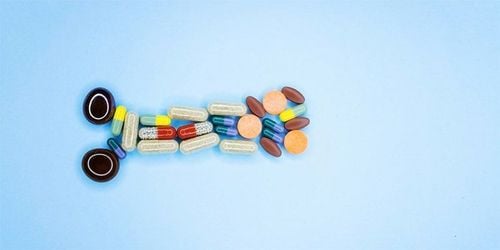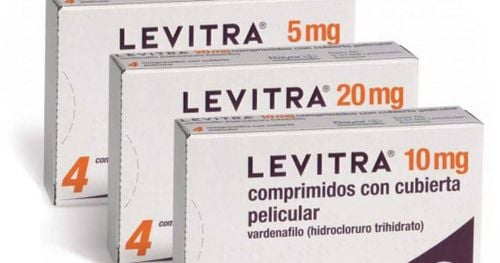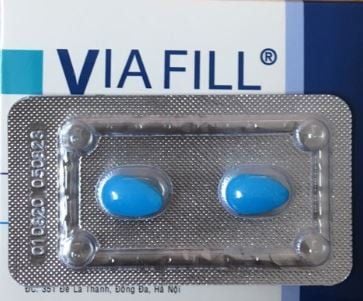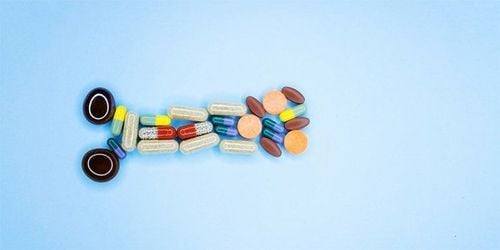This is an automatically translated article.
Erectile dysfunction is a common problem in the elderly, the age when all physiological functions decline. Currently on the market there are many erectile dysfunction drugs produced, to meet the need to support physiological function in older men. Therefore, to ensure the safety and effectiveness of treatment, patients need to carefully learn the information related to the drug before using it.
1. Erectile Dysfunction
1.1. General Information Erectile dysfunction or erectile dysfunction (ED) is the inability of a man to achieve or maintain an erection during intercourse. Some studies in the US suggest that erectile dysfunction affects 52% of men between the ages of 40 and 70. Several other studies have shown that erectile dysfunction occurs in 10% of men aged 30–39 years, increasing to 59% of men aged 70–79 years.
1.2. Causes Physiological causes: Aging, weakened immune system. Testosterone levels decrease with age. Psychological causes: Stress, stress. Anxiety, depression. Guilt about failure in sexual relations. Problems in married life. Pathological causes: Diabetes Atherosclerosis High blood pressure Obesity Hypercholesterolemia Damage to nerves that stimulate erection. Lifestyle: Drink a lot of alcohol. Tobacco use. Abuse of addictive substances. Use of drugs: Antihypertensive drugs such as: Thiazide diuretics, beta blockers ... Parkinson's drugs. Medicines to treat arrhythmias, or other heart problems. Pain relievers such as Codeine or Morphine used in chemotherapy. Antidepressants such as Sertraline, Nortriptylin... Sedatives: Diazepam, Lorazepam ... Antihistamine H2: Nizatidine, Cimetidine ...
2. Treatments for Erectile Dysfunction
2.1. Erectile dysfunction drugs for the elderly Phosphodiesterase 5 (PDE-5) inhibitors. Testosterone replacement therapy. Drugs placed or injected into the cavernous part of the penis. 2.2. Surgery Surgery is a possible treatment for men with erectile dysfunction that has not been successfully treated by other methods. 2.3. Other Methods Psychotherapy. Change your lifestyle, increase exercise. Weight loss. Limit alcohol and tobacco. Drug addiction treatment.
3. How to use male enhancement pills safely?
Erectile dysfunction drugs are drugs that are able to support the penis to get an erection and maintain it for a certain period of time. Currently, there are several groups of drugs used to support erectile dysfunction with different mechanisms.
3.1. PDE-5 Inhibitors Drugs that inhibit Phosphodiesterase 5 (PDE-5) are common, such as: Avanafil (Stendra), Sildenafil (Viagra), Tadalafil (Cialis), Vardenafil (Levitra, Staxyn). ..
3.1.1. Contraindications Hypersensitivity to any of the ingredients. Avoid concomitant use of Phosphodiesterase 5 (PDE-5) inhibitors. Male patients with cardiovascular disease should avoid sex. The patient has a history of angina occurring during sexual intercourse. Patients with angina or other cardiovascular conditions are being treated with organic nitrates of any kind. The patient is taking an alpha inhibitor. The patient has had new myocardial ischemia in less than 3 months. Patients with severe congestive heart failure or recent cerebrovascular accident in less than 6 months. The patient has abnormal blood pressure, either too high or too low. Patient has uncontrolled arrhythmia. 3.1.2. How to use the drug There are currently 2 ways to use Phosphodiesterase 5 (PDE-5) inhibitors:
The first way: Patients are advised to take the pill about 1 hour before intercourse. PDE-5 inhibitors take effect in 30 minutes and can last for 10 to 36 hours. This is also the most common usage today. The second way: The patient is prescribed a daily dose of the drug by the treating doctor and the appropriate treatment time is determined for each subject. The appropriateness of continued daily prescription medication should be reassessed periodically. 3.1.3. Precautions for use Caution when using Phosphodiesterase 5 (PDE-5) inhibitors in patients with a history or current prostate cancer, cardiovascular diseases such as myocardial infarction, pain chest pain, stroke, arrhythmia. Phosphodiesterase 5 (PDE-5) inhibitors should be used with caution in patients on antihypertensive therapy, in patients with severe renal or hepatic impairment. Use with caution in patients with abnormal genitalia, patients with predisposition to penile erection, sickle cell anemia, multiple myeloma or acute leukemia. Do not use Phosphodiesterase 5 (PDE-5) inhibitors with other treatments for erectile dysfunction. 3.2. Testosterone Replacement Therapy Popular Testosterone replacement therapies today include:
Skin Patches. Sticky material on teeth. Gel for external application. Use drugs that are injected intramuscularly or subcutaneously. 3.2.1. Contraindications to the use of Testosterone replacement therapy: Patients with prostate cancer. Patient with male breast cancer. The patient has sleep apnea. Patient has congestive heart failure, polycythemia vera. The patient has severe urinary tract problems. Before starting testosterone replacement therapy, patients should have regular bone density tests, prostate specific antigen (PSA) test, and enzyme levels. liver, Testosterone levels, Hematocrit levels. In addition, after using therapy, the patient should be examined every 3 - 6 months to assess possible side effects during treatment.
3.2.2. Side effects of Testosterone Replacement Therapy Patients may experience the following side effects after using Testosterone replacement therapy:
Acne or oily skin. Breast swelling or pain. Swollen ankles due to water retention. Reduce frequency of urination. Large breasts in men. Sleep apnea or difficulty breathing during sleep. Testicular shrinkage causes a decrease in size. Hair loss. Mood swings, out of control. Aggressive and irritable. Changes in blood cholesterol levels. Reduced sperm count. Cardiovascular symptoms such as stroke and heart attack. Decreased liver function. Increased risk of death from angina attacks. Polycythemia vera. Aggravation of urinary tract symptoms. Hip fracture due to osteoporosis Growth of prostate cancer cells 3.3. Drugs placed or injected into the penis Alprostadil drugs such as: Caverject, Edex, Prostin VR. Alprostadil is an injection or penile drug used to achieve an erection.
Alprostadil (or Prostaglandin E1) is a vasodilator and vasodilator. In men, Alprostadil helps to dilate the cavernous arteries and smooth muscle of the corpus cavernosum, thereby allowing blood to flow more quickly through the arterioles, and at the same time, the flow of veins through the veins under the faucet is blocked, increasing erections. of the penis.
Alprostadil works to widen the blood vessels in the penis rapidly, helping a person achieve an erection within 8-10 minutes. Alprostadil is an example of an injection into the corpus cavernosum, but doctors may use a three-drug combination called Trimix, which includes Alprostadil, Phentolamine, and Papaverine.
3.3.1. Contraindications of Alprostadil:
History of hypersensitivity to drugs containing the active ingredient Alprostadil. Patients with multiple myeloma, acute leukemia or sickle cell anemia. The patient has anatomical abnormalities of the penis such as cavernous fibrosis, Peyronie's disease or penile angina. The patient has had a penile transplant. The patient is not sexually active. Male children. 3.3.2. Side effects of the drug Alprostadil Using the drug in high doses and for a long time may encounter side effects such as:
Common: Penile dysfunction, increased erection, penile pain, Peyronie's disease, hematoma at the injection site , extravascular hematoma, muscle spasms, bruising. Uncommon: Fungal infection, common cold, fainting, increased or decreased sensation, mydriasis, supraventricular tachycardia, venous bleeding, hypotension, vasodilation, peripheral vascular disorders, confusion varicose veins, nausea, dry mouth, erythema, rash, increased sweating. Rare: Pruritus, urethral hemorrhage, urgency, testicular swelling, pelvic pain, hematuria, dysuria, urinary frequency, spermatozoa, spermatic hernia, testicular swelling, testicular edema.. The information about the drugs to treat erectile dysfunction for the elderly such as drug names, ingredients, mechanism of action, usage, contraindications, side effects and notes when used will help patients. improve the effectiveness and at the same time ensure the safety of treatment.













